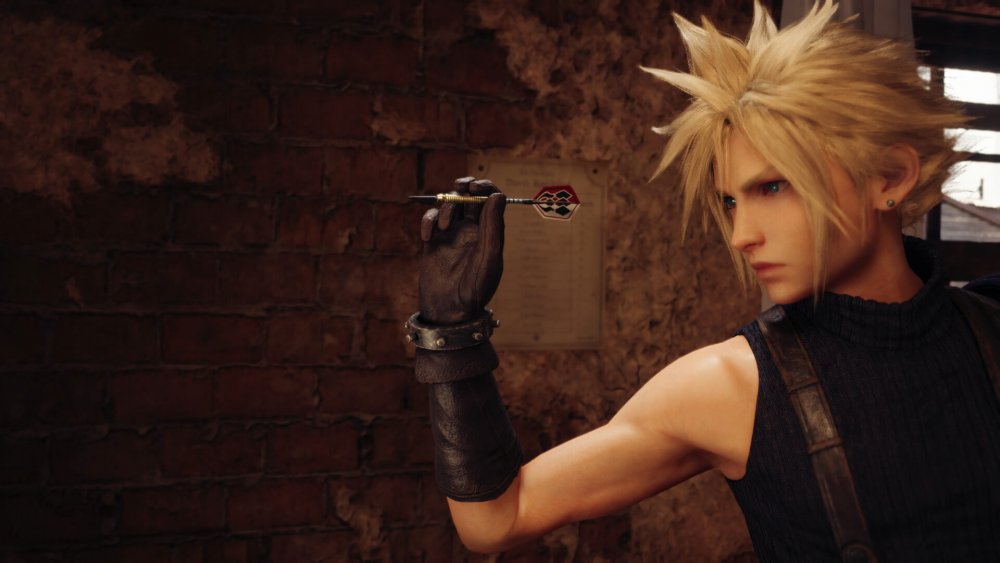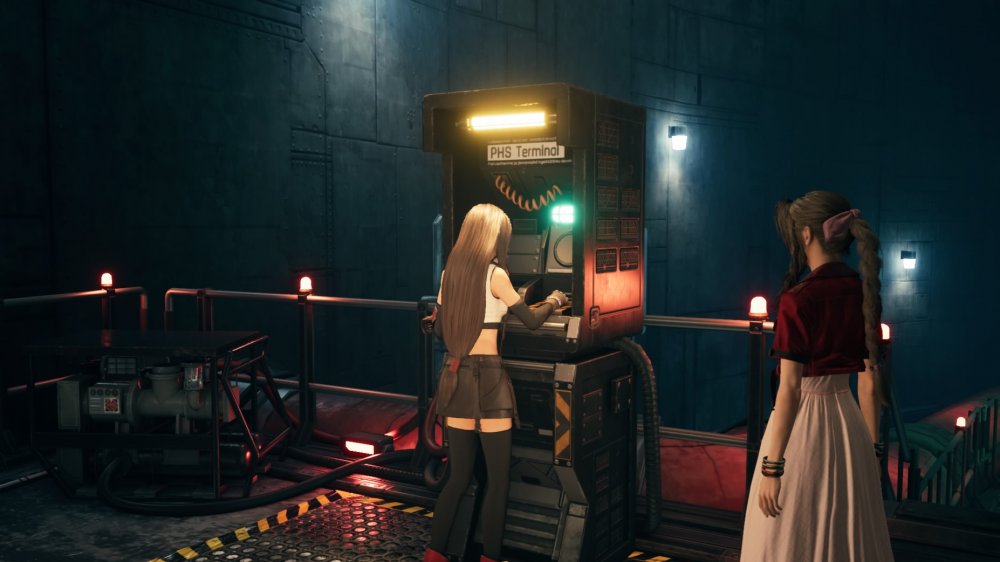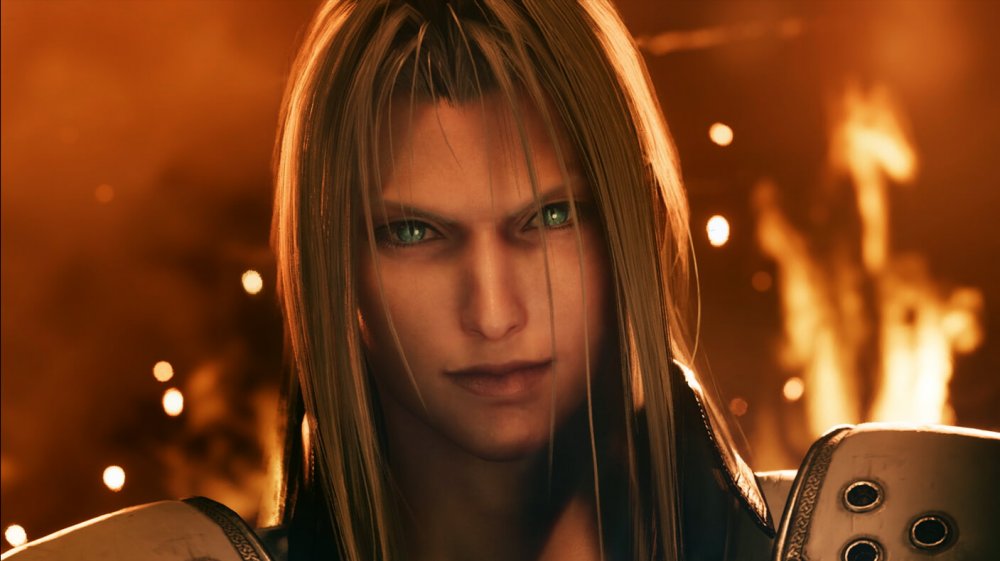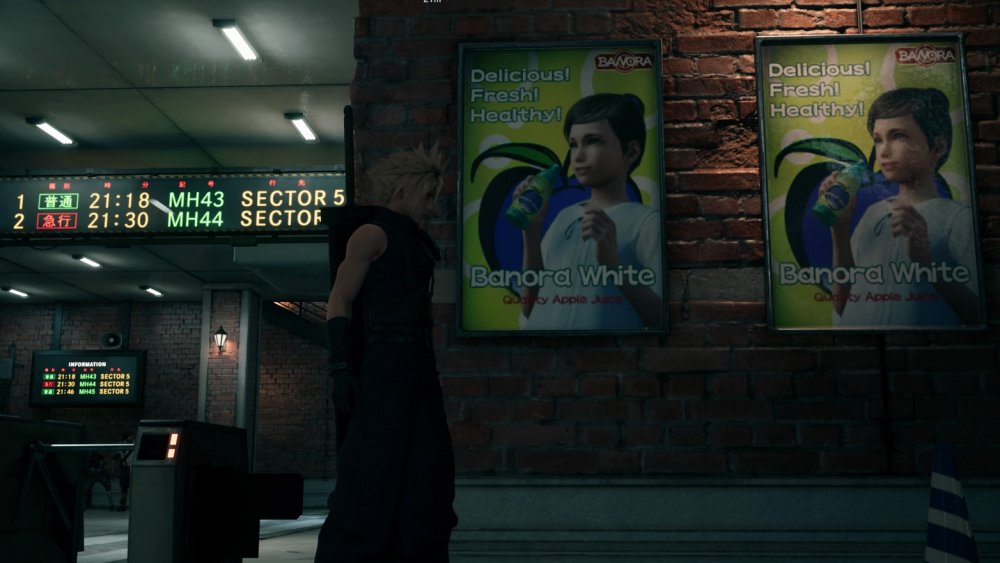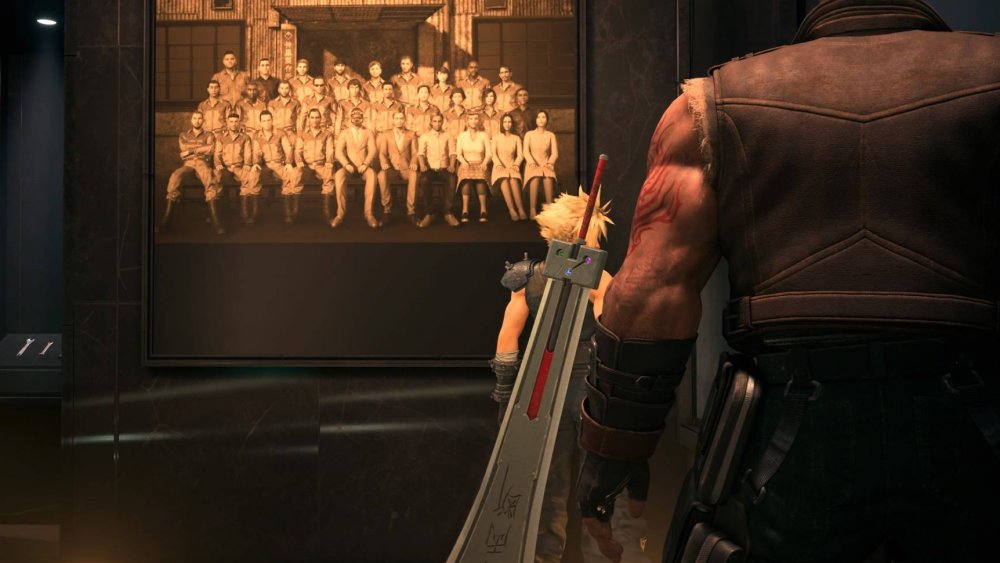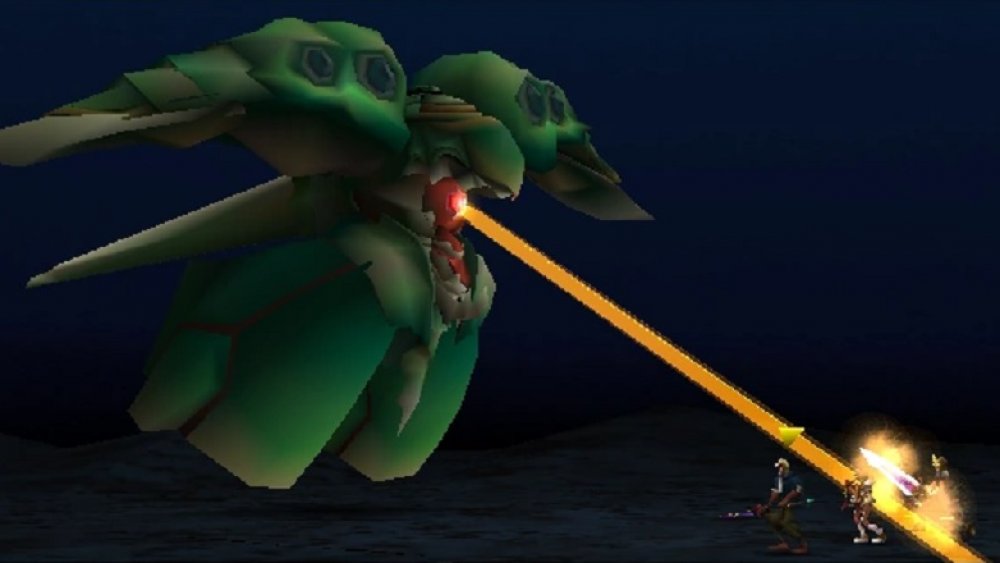Final Fantasy 7 Remake Easter Eggs You Probably Missed
Easter eggs are a proud and longstanding tradition in video games. Since Easter eggs aren't crucial for a game narrative (usually), developers can place eggs virtually anywhere without destroying immersion. Some Easter eggs are buried in locations that are nearly impossible to find, while others hide in plain sight. It doesn't matter how Easter eggs are hidden — if you play a video gam, you're almost guaranteed to find at least one egg. Final Fantasy 7 Remake is no different.
Since Final Fantasy 7 Remake is, well, a remake, it's difficult to determine what is an Easter egg and what isn't. After all, the game recreates a host of characters, locations, enemies, songs, and story beats — even if it intentionally strays from the original's story to work in a new metanarrative about destiny. Still, while playing, you will probably encounter a number Easter eggs without realizing it. So here's a list of a few of Final Fantasy 7 Remake's sneakier Easter eggs.
The return of the PHS
Final Fantasy 7 released in 1997, back when cell phones weren't common. The public and entertainment industry were amazed by what cell phones could do, and as such, the devices had roles at certain points in Final Fantasy 7.
In the original game, players could use the cell phone — better known as the PHS – to swap party members. Switching characters is nothing new in Final Fantasy, but you usually could do it on the fly. However, in Final Fantasy 7, players can't swap characters without using the PHS at save points or on the world map. While Final Fantasy 7 Remake features fewer swappable characters, the PHS returns in a surprisingly obvious (and missable) Easter egg.
When exploring The Drum, the party splits up, and you can't just rely on one team of two characters to get you through. You have to change characters with "PHS" machines. Not only do these terminals share the same name as the old FF7 cell phones, they also have the same purpose. It's one thing to reference an item from a previous game, but referencing its function via an in-game mechanic? That's attention to detail.
Sephiroth is living rent free in Cloud's Punisher Mode
Sephiroth is one of the most recognizable villains in Final Fantasy history. From his flowing silver hair to his seven-foot katana, little about the man isn't iconic — but that's only half of what makes him memorable. The other half is Sephiroth's love of mentally torturing Cloud, specifically by displaying a limited amount of control over Cloud's actions. This puppet and puppeteer relationship seeps into many pieces of media featuring Cloud, including Final Fantasy 7 Remake.
While Sephiroth's control over Cloud in Final Fantasy 7 Remake isn't terribly overt, obvious hints are peppered throughout the game if you know where to look, specifically Cloud's fighting style. In the remake, Cloud has two stances: Operator Mode and Punisher Mode. When idling in Operator Mode, Cloud wields his sword in the classic pose, with sword hilt at his hips and the blade pointed up. However in Punisher Mode, Cloud grips his sword so the hilt is near his neck, and the blade is held horizontally. Some gamers have noticed that this stance is identical to the way Sephiroth wields his sword.
What is the significance of this Easter egg? It could be a sign of things to come, or it could just be a "mandatory" surface level Cloud/Sephiroth connection reference.
There's more to Apple Juice and Hair Tonic ads than meets the eye
The first several minutes of Final Fantasy 7 are tattooed into many a gamer's brain. A train pulls into a station. Cloud fights standard grunt enemies and levels up to level seven — because Final Fantasy 7. The remake flipped the script slightly with a few Easter egg-flavored posters.
The two posters that you should look for in the station are ads for Banora White Apple Juice and Hair Tonic. Banora White is slightly more important since it references Banora White apples. The name is a misnomer since Banora Whites aren't white, but they tie into one of Sephiroth's "friends" – Genesis Rhapsodos from Crisis Core: Final Fantasy 7. Not only was Genesis born in Banora, where these apples are grown, but he also invented the apple juice and its slogan.
Now, the Hair Tonic poster doesn't reference anything in particular. No cheeky name — just generic "Hair Tonic" for "astonishingly radiant and spiky hair," and that's the in-universe joke since Cloud's hair is astonishingly radiant and spikey. This Easter egg only serves to answer the question of how Cloud keeps his hair so very sharp.
A picture is worth a thousand words ... and theories
A photograph can help flesh out a game world. Sometimes an NPC frames a picture of an old friend you will encounter later in the game, and other times the picture features an Easter egg.
When you visit Tifa's bar, Seventh Heaven, you might notice the pictures, specifically one of a bar taken from an isometric viewpoint. What is this bar and where was the picture taken? The answers are Seventh Heaven from the original Final Fantasy 7. Sometimes Easter eggs are just that simple, but the next one isn't.
Near the end of the Final Fantasy 7 Remake (warning: spoilers), you will wander through a Shinra museum, and several exhibits will catch your eye. One in particular shows a picture of people in front of a factory. Looks fairly standard except for the guy wearing a mask that will only be familiar to Final Fantasy 10-2 veterans. The mask is identical to that worn by a child named — get this — Shinra, who wanted to tap into the life force of the game's planet for unlimited energy. And yes, that's precisely how Final Fantasy 7's Shinra organization creates Mako energy. Shortly after FF10-2 launched, a connection theory between that game and FF7 floated around, and now Final Fantasy 7 Remake is reopening the theory floodgates.
Weaponized Tiaras
JRPGs like Final Fantasy tend to feature at least one superboss as an ultimate test of gamer skill, strategy, and patience. Superbosses even tower over final bosses, and few superbosses are more recognizable than Final Fantasy 7's Emerald and Ruby Weapons. The Diamond Weapon, meanwhile, isn't a superboss despite being related to those two. None of these weapons reappear canonically in Final Fantasy 7 Remake, but developers included them in a super sneaky Easter egg that requires a bit of backstory.
In the original Final Fantasy 7, you have to dress Cloud as a woman to enter Don Corneo's mansion. Likewise, in the remake, players can't enter the mansion unless Cloud wears a dress, but the methods between the games are different. In FF7, you need to collect different items. One of these items is a choice between the Glass, Ruby, or Diamond Tiaras. You don't need these in the remake, but they return after you deal with Don Corneo.
If you accept the side quest fittingly titled Corneo's Secret Stash, you will, well, raid Corneo's secret stash, or stashes to be specific. Each of his stashes hides a tiara, which references the original game's Glass, Ruby, and Diamond Tiaras, except this time the Glass Tiara is replaced by an Emerald Tiara. Plus. if you examine each item, they look like their respective weapons. It's like a reference within a reference.

